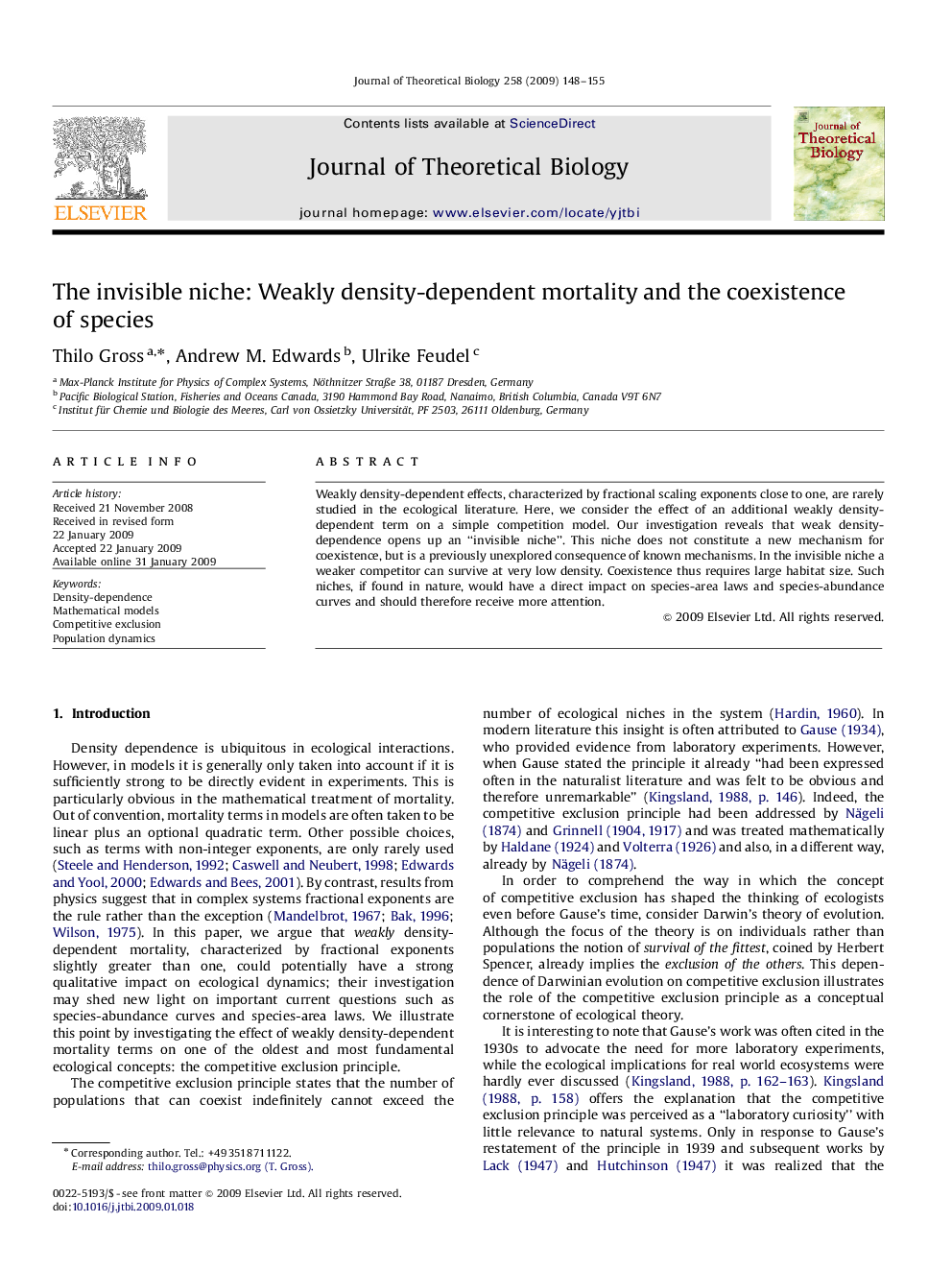| Article ID | Journal | Published Year | Pages | File Type |
|---|---|---|---|---|
| 4498309 | Journal of Theoretical Biology | 2009 | 8 Pages |
Abstract
Weakly density-dependent effects, characterized by fractional scaling exponents close to one, are rarely studied in the ecological literature. Here, we consider the effect of an additional weakly density-dependent term on a simple competition model. Our investigation reveals that weak density-dependence opens up an “invisible niche”. This niche does not constitute a new mechanism for coexistence, but is a previously unexplored consequence of known mechanisms. In the invisible niche a weaker competitor can survive at very low density. Coexistence thus requires large habitat size. Such niches, if found in nature, would have a direct impact on species-area laws and species-abundance curves and should therefore receive more attention.
Related Topics
Life Sciences
Agricultural and Biological Sciences
Agricultural and Biological Sciences (General)
Authors
Thilo Gross, Andrew M. Edwards, Ulrike Feudel,
